My exhibition at the Walker Art Center closes on January 2nd. If you don’t get a chance to see it, you can view some installation views here.
![]()
My exhibition at the Walker Art Center closes on January 2nd. If you don’t get a chance to see it, you can view some installation views here.
![]()
The Mushroom Collector by Jason Fulford
When this book arrived, I saw the cover and was afraid to look inside. I flipped through the first few pages and then put it down. I didn’t look at it again for days. It was everything I’d been waiting for and almost too much to handle. Now, after living with it for weeks, I can finally set aside my insane jealousy and proclaim this not only my top book of the year, but one of my all-time favorites.

La Carte d’apres Nature edited by Thomas Demand
It is rare that an exhibition catalog becomes a work of art in and of itself (see You and Me and the Art of Give and Take by Allen Ruppersberg on my 2009 list). Based on René Magritte’s short-lived magazine of the same name, La Carte d’apres Nature is a dreamy, free-associative ramble through Monaco, Surrealism, Botanical Gardens, Luigi Ghirri’s eye and Thomas Demand’s brain. With a catalog this good, who needs the exhibition?

Family by Chris Verene
One of the masters of combining text and image, Verene’s book feels like an invitation to Galesburg, Illinois for a family slideshow. Funny, tragic and tender.

Story / No Story by Tobias Zielony
A floating, nocturnal tour around the globe of teenagers waiting for something to happen. Story / No Story perfectly captures the romantic ennui of the end of youth.
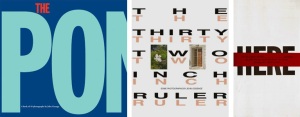
3 or 4 books by John Gossage: The Pond, The Thirty-Two Inch Ruler / Map Of Babylon, HERE
What a treat to follow Gossage’s labyrinthine eye from his 25-year-old masterpiece to his utterly vital current publications. I can’t choose just one.
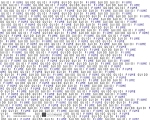
Fiume by Guido Guidi
If I were to make a list of my top 10 magazines of the year, #1 would be Fantom, the excellent new Italian photo magazine (or at least it would be tied for #1 with Foam, but I digress). Fatom is also in the book business. Their second offering (after an excellent Takashi Homma book) is a modest little softcover about a modest little river near Guidi’s hometown. Like John Gossage, Guidi is a photographer’s photographer who looks at the world with tremendous subtlety. Now if only someone would make a Guidi book with wide US distribution.

Yutaka Takanashi, Photography 1965-74 & Books on Books #6 Yutaka Takanashi: Toshi-e
A double-punch knockout of Yutaka Takanashi for photobook connoisseurs. These two books are the perfect combination of craftsmanship and scholarship.

The Sound of Two Songs by Mark Power
Just when I’m in the deepest depths of large-format, color-photo fatigue, along comes Mark Power to save the day. Power’s pictures are so good that they almost make me want to haul the 8×10 out of storage.
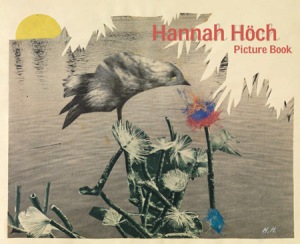
Picture Book by Hannah Höch
During 2010 most of my book collecting budget went toward photographically illustrated children’s books. Since most of these books are over fifty years old, they tend to be pricey. So I was enormously happy to find this inexpensive facsimile of Höch’s fantastic children’s book.
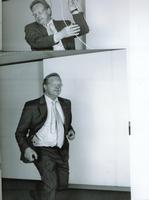
Playing Borders by Anouk Kruithof
A mixture of photos, pamplets, poscards and posters, Playing Borders is always on the verge of falling apart – as is its subject: an almost empty, generic office space in which office workers create performances and temporary sculptures. Unfortunately I recently learned that Playing Borders came out in 2009 (it took awhile for it to find its way to Minnesota). But if you want a good photobook by a young Dutch artist dealing with generic office spaces from 2010, I can also recommend How Terry Likes his Coffee by Florian van Roekel (see my list of self-published books below).

Ten self-published photo books
It is important to highlight the incredibly vibrant world of self-publishing in 2010. What I love about much of this work is that it is less about the aspiration for profundity than it is about raw energy. To use the music analogy, these books are more like live shows than albums. As such, much of this work rejects the world of traditional commerce, book awards and top 10 lists. Nonetheless, here are ten that caught my eye this year:
Procrastinations by Jack Webb
720 (Two Times Around) by Andrew Phelps
Sketches by Viviane Sassen
Repose by Charlotte Dumas
Desperate Cars by Sébastien Girard
Grown Down by Lindsey Castillo & Tuomas Korpijaakko
As It Is? In Four Chapters by Harvey Benge
Since July by Eric Ruby
How Terry likes his Coffee by Florian van Roekel
Getting to know my husband’s cock by Ellen Jong
But like all of this list-making business, it just comes down to personal taste. I encourage people to visit some of the resources out there for finding those thrilling little gems that speak to their own experience:
http://selfpublishbehappy.com
http://www.publishityourself.org
http://theindependentphotobook.blogspot.com
http://www.indiephotobooklibrary.org/
Happy Hunting,
![]()
PS. Only a couple of year end lists have been published so far (5b4 & Sean O’Hagan/Guardian) – I’d love to hear your favorites.
In this two-day workshop at Cesuralab in Pianello Val Tidone, Italy, Alec Soth will discuss different approaches to conceiving and executing the production of a photographic book. Along with the issues of editing, sequencing, layout and design, Soth will speak about the diverse distribution channels available to contemporary photographers.
Alec Soth with also be participating in a free panel discussion with Magnum photographers Chris Anderson and Alex Majoli. Information here

I have been asking different photographers one question : “What was the first photo book that you can remember buying or seeing that really had a strong affect on you?” Here is Amy Stein’s response:
“The fist photography book I can remember having a real impact on me was Masahisa Fukase’s The Solitude of Ravens. In 2002, I was completely new to photography and trying to learn the basics by taking classes at the International Center of Photography. I was fortunate to study with a fabulous photographer named Ellen Binder who made it a practice to bring in photography books to sharewith us. We’d pour over the books while she told stories about how they’d influenced her.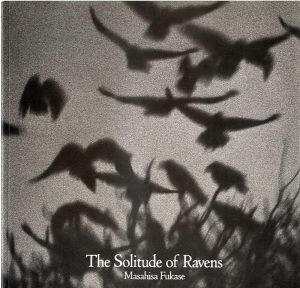
The minute I opened Ravens I felt drawn to Fukase’s brooding approach and the book’s oblique but deafening poetic narrative. I was struck by the iconic nature of the images and completely moved by the intensely personal feel of the world Masahisa had created. Only later would I learn that Fukase made the images while on a train ride home to Hokkaido after the dissolution of his twelve-year marriage.
Masahisa shot from the moving train and ventured out during stops to track the ravens; long a symbol of ominous events and death. The book features mostly stark black and white images of the ravens, flying, falling, in shadow, perched on posts and tress, along and in groups. Many of the images in the book are enlarged, grainy and overexposed. Fukase’s concern for atmosphere and emotion over technical perfection was an important early lesson for me.”
Amy Stein
More info on the book here
December 8th, 6:30pm
Lecture at FIT
John E. Reeves Great Hall / Seventh Avenue at 27 Street
Free and open to the public
More info here
December 9th, 7-8pm
Talk & Booksigning at The Strand
Free and open to the public
More info here
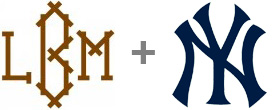
Thanks for all of the excellent feedback to my recent Open Letter to the New York Times Book Review. As I mentioned in my post, the one big chance for art books is the annual Holiday Book Review. Today it arrived. As usual, illustrators did pretty well. There was the obligatory review of a New Yorker illustrator’s book (Maira Kalman…again!), Comics (three reviews by Douglas Wolk), Graphic Novels (a review of Duncan the Wonder Dog), Drawing (a review of Picture This by Drawn Quarterly), and yet another Comics review (Doonesbuy at 40).
My pulse quickened as I looked at the double-page Visuals section. But just like last year, typography owned this section (Manual of Typography, Retrofonts, Literary Tattoos from Bookworms Worldwide, Modern British posters).
How did photography fare? There were the usual travel coffee table photo books (New York: Portrait of A City, Yvon’s Paris). But then, tucked into a section called Curiosities was, gasp, an actual review of an authored photography book: Lost Souls by Lena Herzog. The most surprising thing to me is that I hadn’t heard of either the book or the photographer. I went to Herzog’s website but couldn’t find much more about the book. But I did learn on her Wikipedia page that she’s married to my favorite living filmmaker: Werner Herzog. I don’t want to believe that this is the reason her book was reviewed. So I’m curious if anyone else has seen the book. If so, what do you think of it?
![]()
Hey Les, look what I found for sale:
http://www.cnn.com/2010/US/12/04/montana.unabomber.property/index.html

The Unabomber’s View, 2008, from Broken Manual
![]()
When Alice opened the little door to wonderland everything changed, and I completely understand that feeling. For the last month I have made a huge career change. On October 27th I gave birth to a baby boy. Since that day I’ve been floating and periodically sinking while the days melt together. It is very similar to the first month of a relationship, falling in love, getting to know the other person, their likes and dislikes. The only difference is that I know that I love him and always will.
Just to reassure everyone I still love books. I am working on a new book, more info coming soon. Also, I recently received a present from my father, a handmade 12’ wide by 8’ tall bookcase. So when I’m not changing diapers, nursing, or rocking my baby to sleep, I am organizing my book collection. I am happy that I now have a lot of space for new additions.
Carrie Buddy signing off
Buy your holiday LBM gifts now and your Little Brown Merchandise will come wrapped in the Jason Polan poster: How To Become A Little Brown Mushroom.
Come visit the LITTLE BROWN MUSHROOM WEB STORE today!!!!